Things to do in Mallorca
Mallorca is a famous beach destination where the main attractions for many visitors are the lovely beaches and beautiful jewel-coloured water. Sun-worshippers will adore the endless stretches of idyllic coastline, with Palma Nova, Illetes, and Es Trenc on the southeast coast being the most popular.
Mallorca is, however, also steeped in a rich and wonderful Mediterranean history and has some fascinating attractions that will appeal to all kinds of travellers. Visitors will love the Catedral El Seo, Castell del Bellver and the Museo d'Art Espanyol Contemporani in Palma, while the Banys Arabs, the only surviving Moorish building in the city, is a fascinating attraction.
History buffs should take a trip to Santa Margalida, which boasts more than 150 archaeological sites, and visit the Son Real Necropolis, where Phoenicians were buried from the Iron Age to Roman times. Fascinating historic towns such as Valldemossa, Lluc, Pollensa, Arta and Alcudia leave tourists spoilt for choice.
Those looking for a taste of the outdoors as well as some history will love the Castell d'Alaro, Mallorca's most popular hiking trail. It begins from the town of Alaro and winds up to a ruined 15th-century castle and hilltop chapel, which offers breathtaking views over the island and sea. The Mallorca Caves are also worth a visit for nature lovers, as they have impressive underground lakes, stalactites and stalagmites.
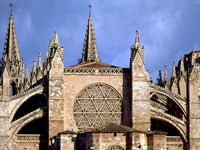
La Seo Cathedral
Palma's magnificent Catalonian Gothic cathedral is a landmark of the city and stands in the old town overlooking the ocean. The cathedral is actually called the Cathedral of the Sa…
La Seo Cathedral
Palma's magnificent Catalonian Gothic cathedral is a landmark of the city and stands in the old town overlooking the ocean. The cathedral is actually called the Cathedral of the Saviour (Catedral del Salvador) but is situated on the Plaza de la Seo. Commonly referred to as La Seo, it forms part of a UNESCO World Heritage Site and was built on the site of an existing ancient mosque and ancient Roman forum. Construction on the Romanesque Cathedral began in 1140 and there have been numerous rebuilds, additions and renovations since then, including an extensive restoration in the second half of the 20th century, when Roman and Muslim remnants were excavated and exposed.
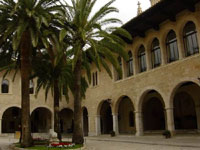
Palau de l'Almudaina
Opposite the cathedral in Palma stands an austere fortress palace that was erected by the Moors and later became the residence of the kings of Mallorca. The Moors built the fortres…
Palau de l'Almudaina
Opposite the cathedral in Palma stands an austere fortress palace that was erected by the Moors and later became the residence of the kings of Mallorca. The Moors built the fortress in 1281 and it was converted into a royal residence at the end of the 13th century. However, evidence suggests that the Moors themselves built on an existing Roman fort. The palace is still officially a royal residence, though very seldom occupied, and is occasionally used for royal functions and events. Inside, most rooms and corridors are bare but there are some beautiful Flemish Gobelin tapestries on display as well as a few antiques, art works and suits of armour.
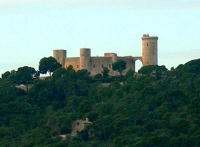
Castell de Bellver
Built in the 14th century and surrounded by a double moat, this round hilltop castle was the summer residence of the kings of Mallorca. While once serving as a prison, today it con…
Castell de Bellver
Built in the 14th century and surrounded by a double moat, this round hilltop castle was the summer residence of the kings of Mallorca. While once serving as a prison, today it contains Palma's Municipal Museum, which displays archaeological artefacts and models of excavations. The unusual castle sits atop a lovely park area and its highlights include spectacular views and photo opportunities. Visitors can explore a series of chambers upstairs above the museum below, and should not miss the prisoner's graffiti etched into the stonework, which is visible if guests climb up to the roof. The Bellver Castle is on the route of the Palma City open-top sightseeing buses, but the walk up through the forest from Placa Gomilla is pleasant and not too strenuous.
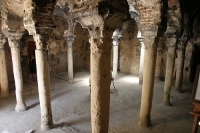
Banys Arabs
The only surviving Moorish building in Palma is the bathhouse of Banys Arabs, which is located in the city's medieval quarter. It contains an elegant horseshoe-arched dome chamber …
Banys Arabs
The only surviving Moorish building in Palma is the bathhouse of Banys Arabs, which is located in the city's medieval quarter. It contains an elegant horseshoe-arched dome chamber supported by 12 columns, and fronted by a lovely little garden with picnic tables. Although this is a small attraction that basically consists of two empty chambers (hence the low admission cost), the old architecture is graceful and photographers should enjoy capturing the romantically dilapidated walls and columns. The baths are worth visiting to get some impression of the character of the old city, as they are sadly all that remains.
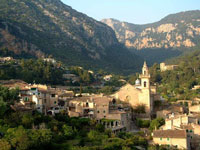
Valldemossa
In 1838, Frederic Chopin arrived in the small town of Valldemossa with his lover, George Sand, to stay in a former monk's cell in the Cartoixa Reial monastery and carry on their af…
Valldemossa
In 1838, Frederic Chopin arrived in the small town of Valldemossa with his lover, George Sand, to stay in a former monk's cell in the Cartoixa Reial monastery and carry on their affair away from the eyes of Paris. The shocked locals shunned the sickly Chopin and Sand, and the couple were so unhappy that their relationship never recovered from the wet, windy and miserable winter in the monastery. Today the cells occupied by the lovers are open to visitors. The library and old pharmacy can also be visited and there is a small art museum with works by Picasso, Miro, and Juli Ramis. Valldemossa is one of the prettiest villages in Mallorca. It's quiet and traditional, with narrow cobbled streets and a backdrop of forested hills.
Website www.valldemossa.es
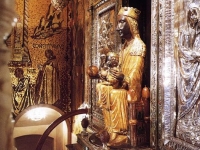
Santuari de Lluc
The remote mountain village of Lluc lies about 20 miles (32km) beyond Soller in a valley that has been an important place of pilgrimage since the 13th century. Lluc became Mallorca…
Santuari de Lluc
The remote mountain village of Lluc lies about 20 miles (32km) beyond Soller in a valley that has been an important place of pilgrimage since the 13th century. Lluc became Mallorca's most sacred site when a shepherd boy discovered a dark wooden statue of the Virgin in a cleft in the rock. The miraculous statue somehow returned to its cave three times after being placed in the local church. Now the statue, known as La Moreneta, has been encrusted with precious stones and resides in its own chapel, receiving pilgrims and tourists who come to pay homage each day.
Website www.lluc.net
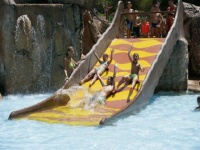
Aqualand Mallorca
Aqualand is one place that is not to be missed by families on holiday in Mallorca. Children of all ages and parents alike will have a grand time splashing in the pools, riding the …
Aqualand Mallorca
Aqualand is one place that is not to be missed by families on holiday in Mallorca. Children of all ages and parents alike will have a grand time splashing in the pools, riding the slides, floating on tubes, splashing in a mini water park or jumping in the wave pools. Those who don't relish excitement can enjoy the lazy river or the Jacuzzis, and the whole family will have fun on the surf beach and group rides. Lockers and sun loungers are available to rent for a small extra charge and there are various options for food and refreshments in the park. Benches and beach areas provide space for relaxation in between the thrills and spills.
Website www.aqualand.es
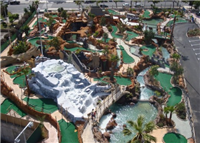
Katmandu Park
Katmandu Park is a theme park and mini-golf complex that's proven wildly popular among younger visitors to Magaluf. Featuring cutting-edge technology, The House of Katmandu provide…
Katmandu Park
Katmandu Park is a theme park and mini-golf complex that's proven wildly popular among younger visitors to Magaluf. Featuring cutting-edge technology, The House of Katmandu provides a thrilling and interactive haunted house experience for youngsters. The Asylum, aimed at older visitors (12 years and older), takes passengers on a scary journey through an abandoned mental asylum; the interactive motion ride Desperado is a comical cowboy gun slinging experience; and there is a 4D cinema to enjoy. The 36-hole (two 18-hole courses) Expedition Golf area of the theme park is hugely impressive, featuring fun and challenging courses, elaborately ornamented and themed, that even adults will find tough to master.
Website mallorca.katmanduparks.com
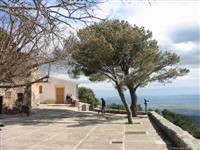
Castell d'Alaro
Mallorca's most popular hiking trail is the climb from the town of Alaro up to a ruined castle and hilltop chapel, which offers panoramic views of the sea and plains as far as Palm…
Castell d'Alaro
Mallorca's most popular hiking trail is the climb from the town of Alaro up to a ruined castle and hilltop chapel, which offers panoramic views of the sea and plains as far as Palma. From Alaro the walk takes about two hours to complete depending on fitness levels. A castle has stood on this site since Moorish times and the fortress was once so impregnable that the Moors managed to hold out against the Christian conquest for two years. Later, in 1285, Mallorcan independence fighters tried to defend the castle against Alfonso III of Aragon, but they were defeated and burned alive for their impudence. The castle ruins now visible on the hilltop date from the 15th century and dominate the landscape. They seem to grow out of the rock and are rather romantic and picturesque, fuelling the imagination.



